Drug Catalog - Product Detail
XULANE 150-35MCG 24HR TDM 3CT
| NDC | Mfr | Size | Str | Form |
|---|---|---|---|---|
| 00378-3340-53 | MYLAN | 3 | 150-35MCG/24HR | TRANSDERMAL SYSTEM |
PACKAGE FILES
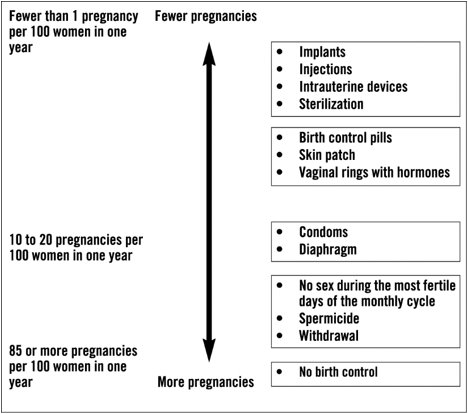











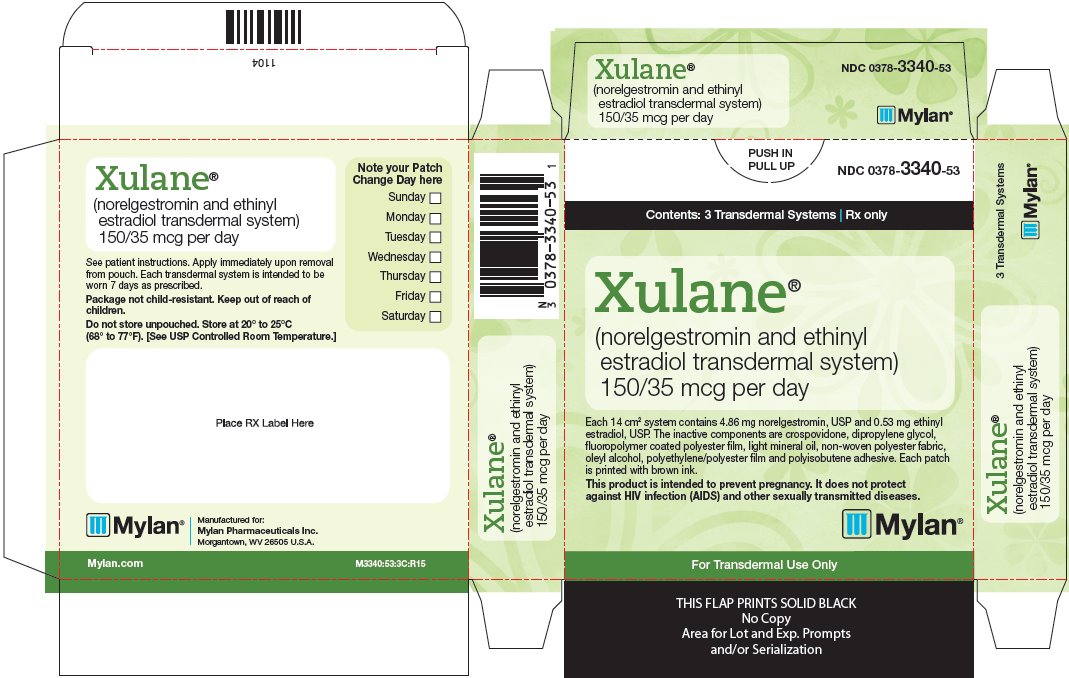



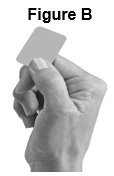

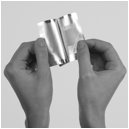

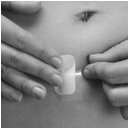
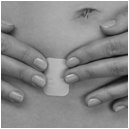
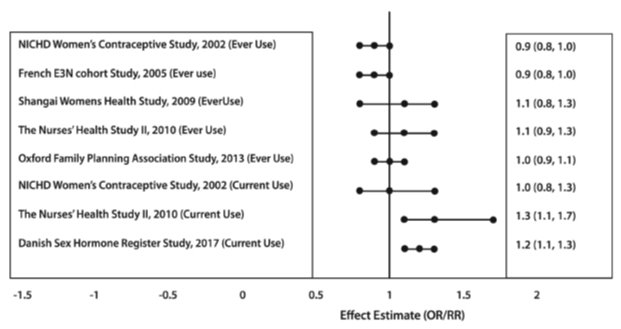
Generic Name
NORELGESTROMIN AND ETHINYL ESTRADIOL
Substance Name
ETHINYL ESTRADIOL
Product Type
HUMAN PRESCRIPTION DRUG
Route
TRANSDERMAL
Application Number
ANDA200910
Description
11 DESCRIPTION Xulane is a transdermal system with a contact surface area of 14 cm². It contains 4.86 mg norelgestromin, USP (NGMN) and 0.53 mg ethinyl estradiol, USP (EE), and its delivery rate is approximately 150 mcg of NGMN and 35 mcg of EE per day. Systemic exposures (as measured by area under the curve [AUC] and steady state concentration [C ss ]) of NGMN and EE during use of norelgestromin and ethinyl estradiol transdermal system are higher and the C max is lower than those produced by an oral contraceptive containing NGM 250 mcg / EE 35 mcg. [See Boxed Warning and Clinical Pharmacology (12.3) . ] Xulane is a thin, matrix-type transdermal system consisting of three layers. The backing layer is composed of a peach flexible film consisting of a pigmented polyethylene outer layer and a polyester inner layer. It provides structural support and protects the middle adhesive layer from the environment. The middle layer contains polyisobutene adhesive, crospovidone, mineral oil, non-woven polyester fabric, oleyl alcohol and dipropylene glycol as inactive components. The active components in this layer are the hormones, NGMN and EE. The third layer is the release liner , which protects the adhesive layer during storage and is removed just prior to application. It is a transparent polyester film with a fluoropolymer coating on the side that is in contact with the middle adhesive layer. The outside of the backing layer is printed with “Xulane ® (norelgestromin and ethinyl estradiol) 150/35 mcg per day” in brown ink. Xulane transdermal systems are packaged with additional pieces of protective film above and below the system within each pouch. These pieces of protective film are removed and discarded at the time of use. The structural formulas of the components are: Molecular weight, NGMN: 327.47 Molecular weight, EE: 296.41 Chemical name for NGMN: 18, 19-dinorpregn-4-en-20-yn-3-one, 13-ethyl-, 17-hydroxy, 3-oxime, (17 α )- Chemical name for EE: 19-Norpregna-1,3,5(10)-trien-20-yne-3, 17β-diol, (17 α )- Norelgestromin and Ethinyl Estradiol Structural Formula
How Supplied
16 HOW SUPPLIED/STORAGE AND HANDLING 16.1 How Supplied Xulane ® (norelgestromin and ethinyl estradiol transdermal system) is available in one strength of 150 mcg/day NGMN and 35 mcg/day EE. Xulane ® is a 14 cm² peach, transdermal system printed with “Xulane ® (norelgestromin and ethinyl estradiol) 150/35 mcg per day” in brown ink. Each system contains 4.86 mg norelgestromin, USP and 0.53 mg ethinyl estradiol, USP. Each transdermal system is packaged in a protective pouch. Xulane ® (norelgestromin and ethinyl estradiol transdermal system) is available in folding cartons of one cycle each (NDC 0378-3340-53); each cycle contains 3 systems. 16.2 Special Precautions for Storage and Disposal Store at 20° to 25°C (68° to 77°F). [See USP Controlled Room Temperature.] Store patches in their protective pouches. Apply immediately upon removal from the protective pouch. Do not store in the refrigerator or freezer. Used patches still contain some active hormones. The sticky sides of the patch should be folded together and the folded patch placed in a sturdy container, preferably with a child-resistant cap, and the container thrown in the trash. Used patches should not be flushed down the toilet.
Indications & Usage
1 INDICATIONS AND USAGE Xulane is indicated for the prevention of pregnancy in women with a body mass index (BMI) < 30 kg/m 2 for whom a combined hormonal contraceptive is appropriate. Limitations of Use: Xulane may be less effective in preventing pregnancy in women who weigh 198 lbs. (90 kg) or more. Xulane is contraindicated for use in women with BMI ≥ 30 kg/m 2 [see Contraindications (4) , Warnings and Precautions (5.1) and Clinical Studies (14) ] . Xulane is an estrogen/progestin combination hormonal contraceptive (CHC), indicated for the prevention of pregnancy in women with a BMI < 30 kg/m 2 for whom a combined hormonal contraceptive is appropriate. ( 1 ) Limitations of Use: Xulane may be less effective in preventing pregnancy in women at or above 198 lbs. (90 kg). ( 1 , 4 , 14 )
Dosage and Administration
2 DOSAGE AND ADMINISTRATION To achieve maximum contraceptive effectiveness, Xulane must be used exactly as directed. Complete instructions to facilitate patient counseling on proper system usage may be found in the FDA-Approved Patient Labeling. • Xulane uses a 28-day (4-week) cycle. Apply a new patch to the upper outer arm, abdomen, buttock or back each week for 3 weeks (21 total days). Week 4 is patch-free. ( 2.1 , 2.3 ) • Apply each new patch on the same day of the week. Wear only one patch at a time. ( 2.1 ) • Do not cut or alter the patch in any way. ( 2.1 ) 2.1 How to Use Xulane The Xulane transdermal system uses a 28-day (4-week) cycle. A new patch is applied each week for 3 weeks (21 total days). Week 4 is patch-free. Withdrawal bleeding is expected during this time. Every new patch should be applied on the same day of the week. This day is known as the “Patch Change Day.” For example, if the first patch is applied on a Monday, all subsequent patches should be applied on a Monday. Only one patch should be worn at a time. Do not cut, damage or alter the Xulane patch in any way. If the Xulane patch is cut, damaged or altered in size, contraceptive efficacy may be impaired. On the day after Week 4 ends, a new 4-week cycle is started by applying a new patch. Under no circumstances should there be more than a 7-day patch-free interval between dosing cycles. 2.2 How to Start Using Xulane There are multiple options for starting the Xulane patch, and the woman should choose the option that is most appropriate (see Table 1): Table 1: Instructions for Administration Starting Xulane in women with no current use of hormonal contraception The woman has two options for starting the patch and she should choose the option that is right for her: First Day Start • The woman should apply her first patch during the first 24 hours of her menstrual period. If a patch is applied after the first 24 hours of menstruation, non-hormonal back-up contraception (such as condoms and spermicide, or diaphragm and spermicide) is needed for the first 7 days of the first cycle only. • The woman should apply a new patch each week for three weeks (21 total days). Every new patch should be applied on the same day of the week. This day is known as the “Patch Change Day.” For example, if the first patch is applied on a Monday, all subsequent patches should be applied on a Monday. Only one patch should be worn at a time. • No patch is worn during Week Four (the “Patch-Free Week”). Withdrawal bleeding is expected during this time. • On the day after Week 4 ends, a new 4-week cycle is started by applying a new patch. Under no circumstances should there be more than a 7-day patch-free interval between dosing cycles. Sunday Start • The woman should apply her first patch on the first Sunday after her menstrual period begins. • With this option, a non-hormonal backup method of birth control, such as a condom and spermicide or diaphragm and spermicide, is needed for the first 7 days of the first cycle only. • If her period starts on a Sunday, the first patch should be applied that day, and no backup contraception is needed. Switching from another contraceptive method Oral combination hormonal contraception (oral CHC) • If the woman is switching from the pill to Xulane, she should complete her current pill cycle and apply the first Xulane patch on the day she would normally start her next pill • If she does not get her period within a week after taking the last active pill, she should check with her healthcare professional to be sure that she is not pregnant, but she may go ahead and start Xulane for contraception. • If the patch is applied more than a week after taking the last active pill, she should use a non-hormonal back-up contraception (such as condoms and spermicide, or diaphragm and spermicide) concurrently for the first 7 days of patch use. Transdermal system • If the woman is switching from another contraceptive transdermal system to Xulane, she should complete the current transdermal system cycle and apply the first Xulane patch on the day the next transdermal system cycle would normally start. • If she does not get her period within a week after removing the last transderamal system, she should check with her healthcare professional to be sure that she is not pregnant, but she may go ahead and start Xulane for contraception. If Xulane is applied more than a week after removal of the last patch, nonhormonal back-up contraception (such as condoms and spermicide, or diaphragm and spermicide) should be used concurrently for the first 7 days of patch use. Vaginal ring • If the woman is switching from the vaginal ring to Xulane, she should complete her current vaginal ring cycle and apply the first Xulane patch on the day she would normally insert her next vaginal ring. • If she does not get her period within a week after removing the last vaginal ring, she should check with her healthcare professional to be sure that she is not pregnant, but she may go ahead and start Xulane for contraception. • If the patch is applied more than a week after removal of the last vaginal ring, she should use a non-hormonal back-up contraception (such as condoms and spermicide, or diaphragm and spermicide) concurrently for the first 7 days of patch use. Injection • If the woman is switching from an injection contraceptive to Xulane, she should apply the first Xulane patch on the day the next injection would normally occur. Intrauterine system (IUS) • If the woman is switching from an intrauterine system to Xulane, she should apply the first Xulane patch on the day of IUS removal. If the IUS is not removed on the first day of the menstrual cycle, nonhormonal backup contraception (such as condoms and spermicide, or diaphragm and spermicide) should be used concurrently for the first 7 days of patch use. Implant • If the woman is switching from an implant to Xulane, she should apply the first Xulane patch on the day of implant removal. Progestin-only pill • If the woman is switching from a progestin-only pill to Xulane, she should apply the first Xulane patch on the day the next progestin-only pill cycle would normally start. Use after Childbirth Start contraceptive therapy with Xulane in women who elect not to breastfeed no sooner than 4 weeks after childbirth due to increased risk of thromboembolism. If a woman begins using Xulane postpartum, and has not yet had a period, consider the possibility of ovulation and conception occurring prior to use of Xulane, and instruct her to use an additional method of contraception, such as a condom and spermicide or diaphragm and spermicide, for the first 7 days. [See Warnings and Precautions (5.1) and Pregnancy (8.1) .] Use after Abortion or Miscarriage After an abortion or miscarriage that occurs in the first trimester, Xulane may be started immediately. An additional method of contraception is not needed if Xulane is started immediately. If use of Xulane is not started within 5 days following a first trimester abortion, the woman should follow the instructions for a woman starting Xulane for the first time. In the meantime she should be advised to use a non-hormonal contraceptive method. Ovulation may occur within 10 days of an abortion or miscarriage. Start Xulane no earlier than 4 weeks after a second trimester abortion or miscarriage, due to the increased risk of thromboembolic disease. [See Contraindications (4) and Warnings and Precautions (5.1) .] 2.3 How to Apply Xulane CHOOSING A PLACE ON THE BODY TO PUT THE PATCH • The patch may be placed on the upper outer arm, abdomen, buttock or back in a place where it won’t be rubbed by tight clothing. For example, it should not be placed under the waistband of clothing. • The patch should not be placed on the breasts, on cut or irritated skin, or on the same location as the previous patch. Before applying the patch: • The woman should make sure the skin is clean and dry. • She should not use lotions, creams, oils, powders, or make-up at the patch site. It may cause the patch to fail to stick properly or to become loose. HOW TO APPLY THE PATCH • The woman should tear open the pouch at the top edge and one side edge. She should peel open the foil pouch. She should gently remove the contents of the foil pouch and discard the additional pieces of film above and below the patch. • The woman should peel away half of the clear plastic. She should avoid touching the sticky surface with her fingers. • The woman should apply the sticky side of the patch on the skin she has cleaned and dried. She should then remove the other half of the clear plastic and attach the entire patch to her skin. • The woman should press firmly on the patch with the palm of her hand for 10 seconds, making sure that the whole patch adheres to her skin. • She should run her fingers over the entire surface area to smooth out any “wrinkles” around the outer edges of the patch. • The woman should check her patch every day to make sure all edges are sticking correctly. WHEN TO CHANGE THE XULANE PATCH • The patch works for 7 days (1 week). The woman should apply a new patch on the same day each week (her Patch Change Day) for 3 weeks in a row. She must make sure she has removed her old patch prior to applying the new patch. • During Week 4, she DOES NOT wear a patch. She must make sure she removes her old patch. (Her period should begin during this week.) • Following Week 4, she repeats the cycle of three weekly applications followed by a patch-free week. WHAT IF THE PATCH BECOMES LOOSE OR FALLS OFF? The patch must stick securely to the skin to work properly. If the Xulane patch becomes partially or completely detached and remains detached, insufficient drug delivery occurs. The woman should not try to reapply a patch if it is no longer sticky, if it has become stuck to itself or another surface, or if it has other material stuck to it. If a patch edge lifts up: • The woman should press down firmly on the patch with the palm of her hand for 10 seconds, making sure that the whole patch adheres to her skin. She should run her fingers over the entire surface area to smooth out any “wrinkles” around the edges of the patch. • If her patch does not stick completely, she should remove it and apply a replacement patch. • She should not tape or wrap the patch to her skin or reapply a patch that is partially adhered to clothing. If the patch has been off or partially off: • For less than 1 Day, she should try to reapply it. If the patch does not adhere completely, she should apply a new patch immediately. (No backup contraception is needed and her Patch Change Day will stay the same). • For more than 1 Day or if she is not sure for how long, she may not be protected from pregnancy. To reduce this risk, she should apply a new patch and start a new 4-week cycle. She will now have a new Patch Change Day and MUST USE NON-HORMONAL BACKUP CONTRACEPTION (such as a condom and spermicide or diaphragm and spermicide) for the first week of her new cycle. IF THE WOMAN FORGETS TO CHANGE HER PATCH • at the start of any patch cycle (Week 1/Day 1): SHE MAY NOT BE PROTECTED FROM PREGNANCY. She should apply the first patch of her new cycle as soon as she remembers. There is now a new “Patch Change Day” and a new “Day 1.” The woman must use back-up contraception, such as a condom and spermicide or diaphragm and spermicide, for the first week of the new cycle. • in the middle of the patch cycle (Week 2/Day 8 or Week 3/Day 15), - for 1 or 2 days (up to 48 hours), she should apply a new patch immediately. The next patch should be applied on the usual “Patch Change Day.” No back-up contraception is needed. - for more than 2 days (48 hours or more), SHE MAY NOT BE PROTECTED FROM PREGNANCY. She should stop the current contraceptive cycle and start a new 4-week cycle immediately by putting on a new patch. There is now a new “Patch Change Day” and a new “Day 1.” The woman must use back-up contraception for 1 week. • at the end of the patch cycle (Week 4/Day 22), - If the woman forgets to remove her patch, she should take it off as soon as she remembers. The next cycle should be started on the usual “Patch Change Day,” which is the day after Day 28. No back-up contraception is needed. Under no circumstances should there be more than a 7-day patch-free interval between cycles. If there are more than 7 patch-free days, THE WOMAN MAY NOT BE PROTECTED FROM PREGNANCY and back-up contraception, such as a condom and spermicide or diaphragm and spermicide, must be used for 7 days. As with combined oral contraceptives, the risk of ovulation increases with each day beyond the recommended drug-free period. If she has had intercourse during such an extended patch-free interval, consider the possibility of pregnancy. Change Day Adjustment If the woman wishes to change her Patch Change Day, she should complete her current cycle, removing the third Xulane patch on the correct day. During the patch-free week, she may select an earlier Patch Day Change by applying a new Xulane patch on the desired day. In no case should there be more than 7 consecutive patch-free days. Breakthrough Bleeding or Spotting In the event of unscheduled or breakthrough bleeding or spotting (bleeding that occurs on the days that Xulane is worn), treatment should be continued. If unscheduled bleeding persists longer than a few cycles, consider causes other than Xulane. If the woman does not have scheduled or withdrawal bleeding (bleeding that should occur during the patch-free week), she should resume treatment on the next scheduled Change Day. If Xulane has been used correctly, the absence of withdrawal bleeding is not necessarily an indication of pregnancy. Nevertheless, consider the possibility of pregnancy, especially if absence of withdrawal bleeding occurs in 2 consecutive cycles. Discontinue Xulane if pregnancy is confirmed. In Case of Skin Irritation If patch use results in uncomfortable irritation, the patch may be removed and a new patch may be applied to a different location until the next Change Day. Only one patch should be worn at a time. Additional Instructions for Dosing Unscheduled bleeding, spotting, and amenorrhea are frequent reasons for patients discontinuing hormonal contraceptives. In case of breakthrough bleeding, as in all cases of irregular bleeding from the vagina, consider nonfunctional causes. In case of undiagnosed persistent or recurrent abnormal bleeding from the vagina, take adequate diagnostic measures to rule out pregnancy or malignancy. If pathology has been excluded, time or a change to another method of contraception may solve the problem. Use of Hormonal Contraceptives in the Event of a Missed Menstrual Period 1. If the woman has not adhered to the prescribed schedule, consider the possibility of pregnancy at the time of the first missed period. Discontinue use of Xulane if pregnancy is confirmed. 2. If the woman has adhered to the prescribed regimen and misses one period, she should continue using her contraceptive patches. However, if she has adhered to the prescribed regimen, misses one period and has symptoms associated with pregnancy, rule out pregnancy. Discontinue Xulane use if pregnancy is confirmed. 3. If the woman has adhered to the prescribed regimen and misses two consecutive periods, rule out pregnancy. Discontinue Xulane use if pregnancy is confirmed. Choosing a place on the body for the patch How to apply the patch Figure 01 How to apply the patch Figure 02 How to apply the patch Figure 03 How to apply the patch Figure 04
